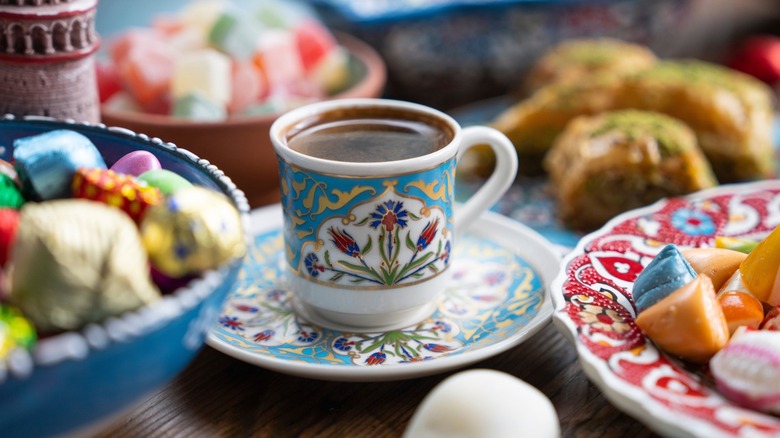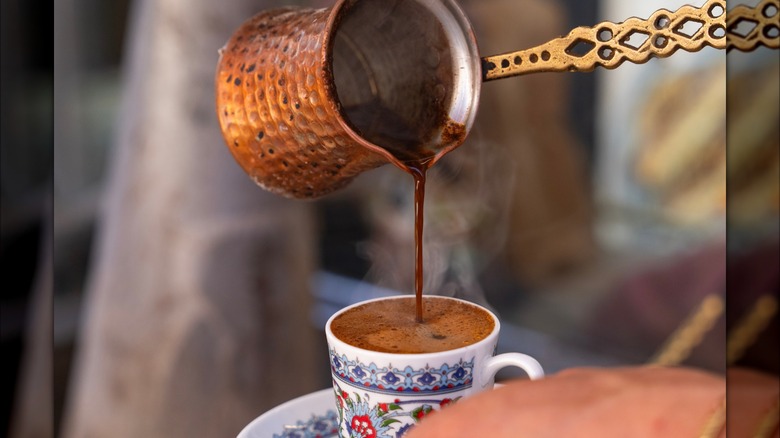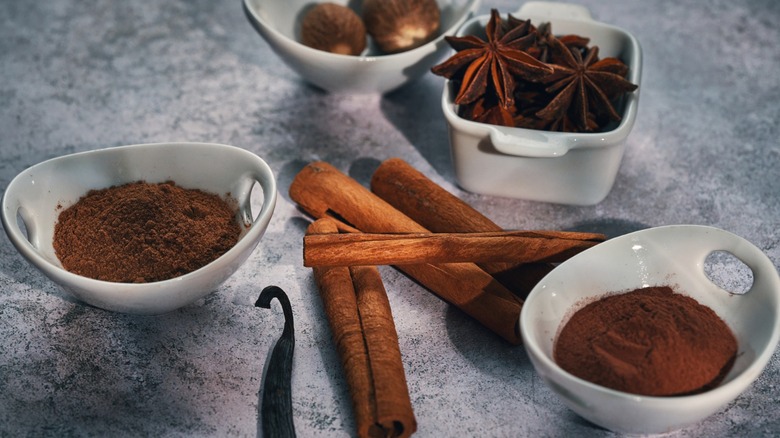The Difference Between Turkish And Greek Coffee, Explained
Coffee is a truly global phenomenon, and many cultures have their own custom spin on the now-quintessential beverage. It's hard to pin down some of the finer details of coffee's origin story, besides the fact that it is thought to have come from the Ethiopian plateau. No matter how it was first prepared in its early days, this beloved drink now has a wide range of popular variations around the world. In Italy, strong espresso takes precedence over brewed coffee, while in Vietnam, salted coffee has become a modern trend with a fabled past. And in the Mediterranean, the Greek and Turkish people have developed their own ways of brewing the energizing drink.
Turkish coffee and Greek coffee may seem quite similar at the outset. Whether you make Greek or Turkish coffee, you use a tall, metallic brewing cup with a handle (called a cezve in Turkish or a briki in Greek), which you use to brew fine coffee grounds until a foamy mixture arises. It's also a common custom to add sugar to this mixture, which you can modify based on how sweet you want your coffee to be. With such similar ingredients and brewing methods, you'd be forgiven for thinking that Turkish coffee and Greek coffee are the same. But there are a few minute but key differences that set the two coffee styles apart: Their grounds each have distinct textures, and they are each prepared in unique ways.
The difference is in the details
While both Turkish coffee and Greek coffee use fairly finely ground coffee beans, the grind in Greek coffee is actually slightly more fine than that of Turkish coffee, which is relatively more coarsely ground. As you might expect, this difference will alter the taste of each coffee, with finer grinds typically providing a stronger flavor compared to coarse grinds. It should be noted that the difference is still marginal here, since Turkish coffee still uses a fine grind, but it is a distinction nonetheless.
You may also see small differences in the preparation methods for Turkish and Greek coffee. While both are mixed and warmed over a low heat in their respective metal vessels, the method for brewing Greek coffee tends to place a lot of focus on developing a layer of coffee foam or froth when it's served in its demitasse. While this foam develops in both Turkish and Greek coffees, Turkish coffee limits the foam in the final product, while it plays a larger role in Greek coffee.
Spice up your coffee ritual
Each of these coffees are known for including sugar at some stage in the brewing process to both take off the bitter edge of their strong coffee flavor and also to simply sweeten the drink and render it even more pleasant. But Turkish coffee is also known for implementing spices to really kick your coffee into another gear, whereas Greek coffee generally doesn't include spices. Ground cardamom and cinnamon are both common additions to Turkish coffee, lending an aromatic, warm flare to a beverage already packed with bold expressions of flavor.
Both Turkish coffee and Greek coffee are steeped in their local customs, and as such, rituals have evolved around the beverage. Both cultures use their respective coffees as opportunities to connect with family and friends, to relax in good company, and to snack on something sweet. Coffee traditions go back hundreds of years, and current Greek and Turkish coffee are customs modern-day bearers of the ritual torch. And after trying them out for yourself, they might become a regular ritual for you too.


